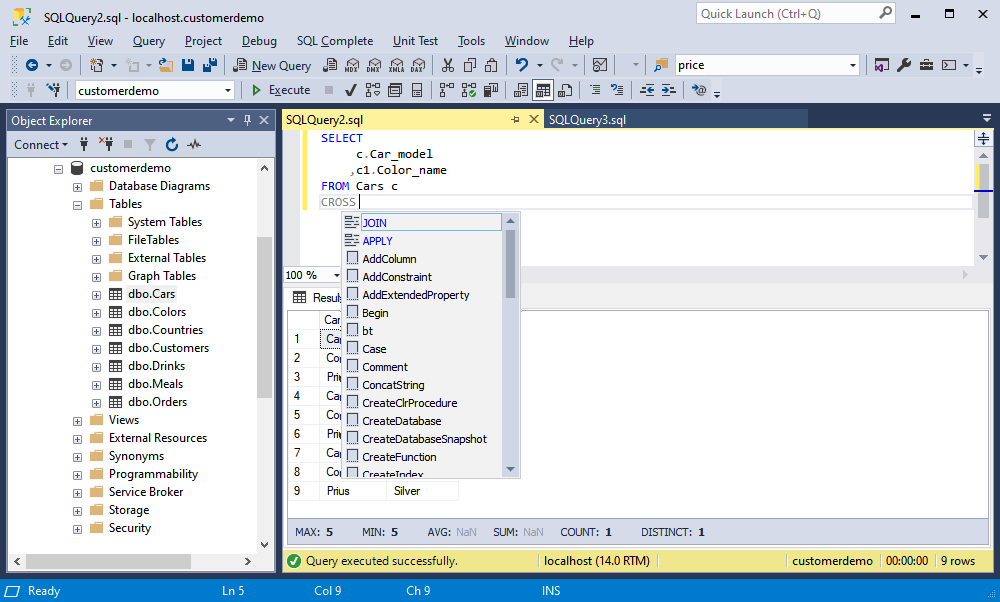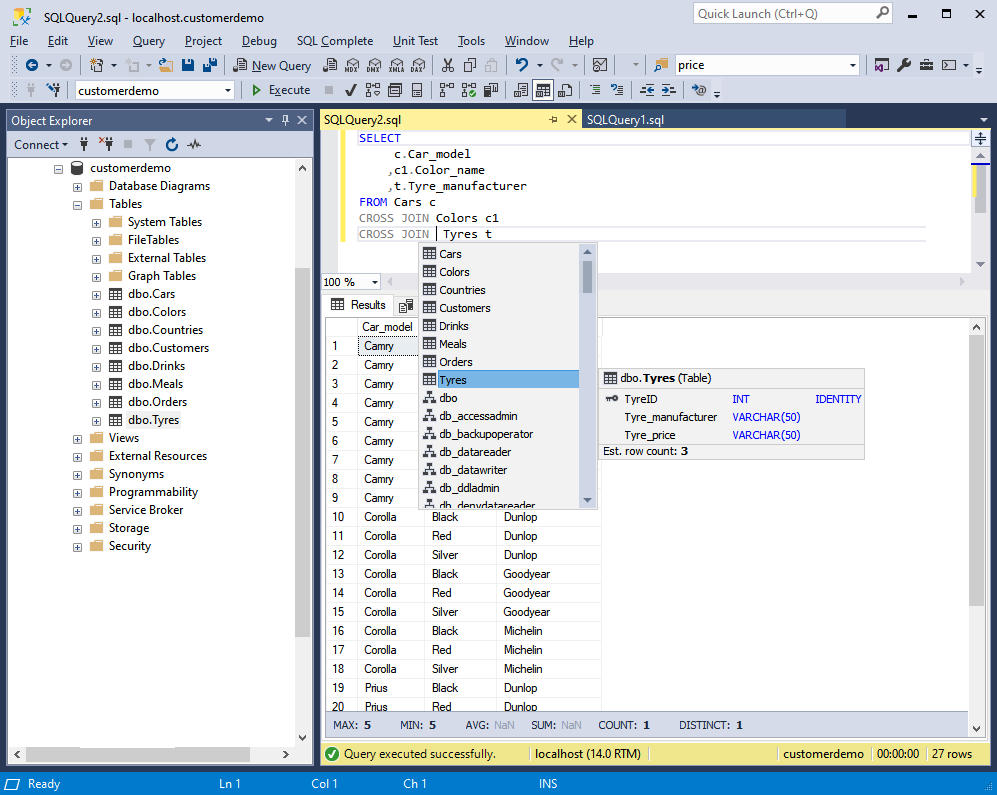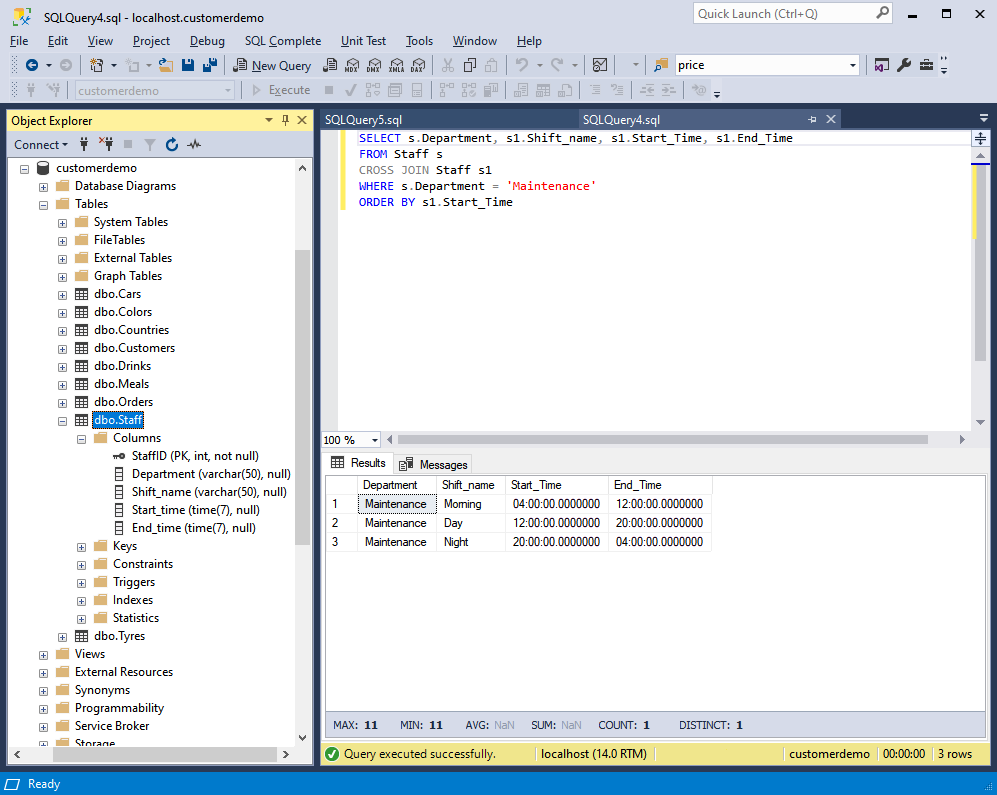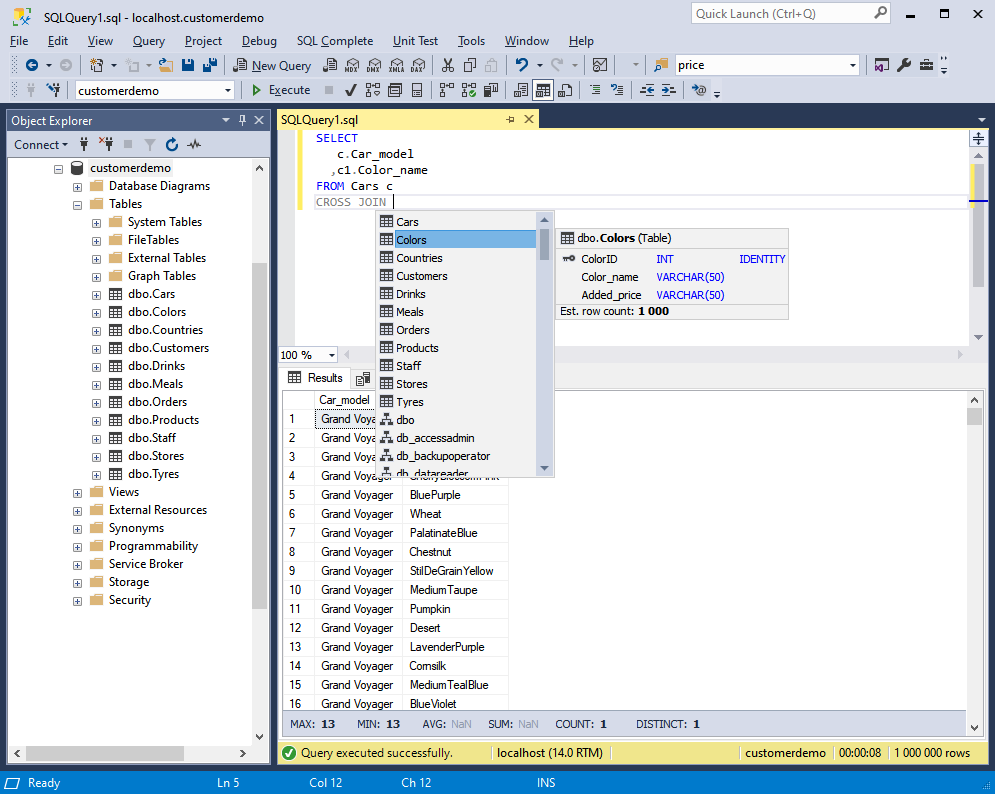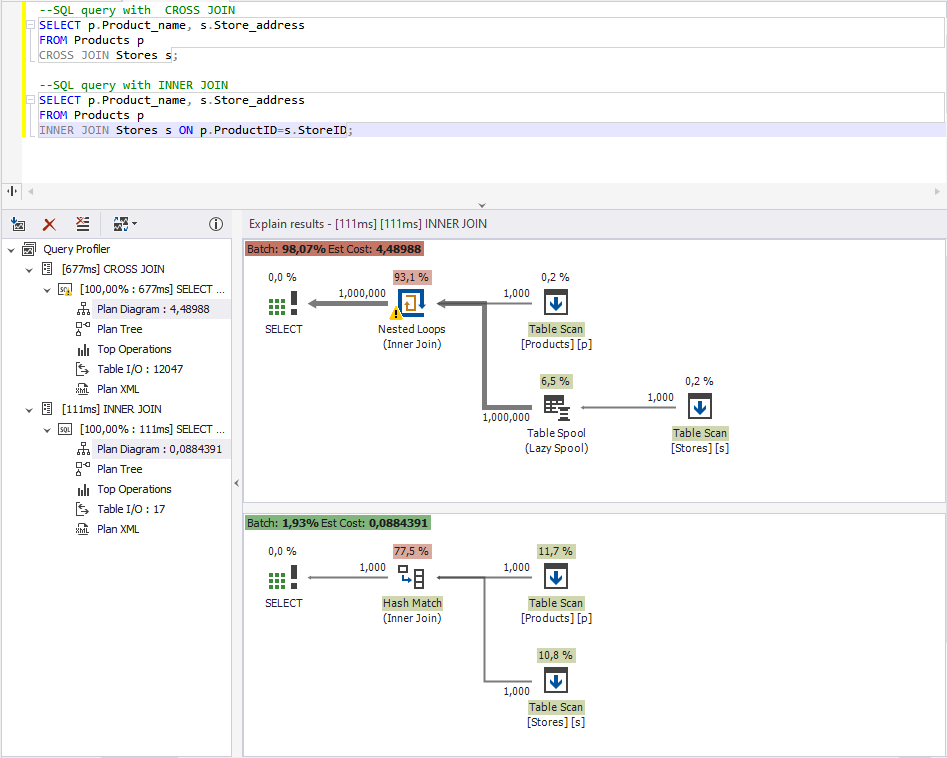What is CROSS JOIN in SQL?
A CROSS JOIN is a type of database join that combines every row from one table with every row from another table. The result is a Cartesian product, containing all possible combinations of rows from both tables.
When to use the CROSS JOIN?SQL CROSS JOIN is used to generate combinations of data, especially when exploring all potential relationships between two sets. They're also useful for creating test or sample datasets, since CROSS JOINs can produce large result sets with many combinations. In some cases, they help build pivot tables or matrix-style outputs.

